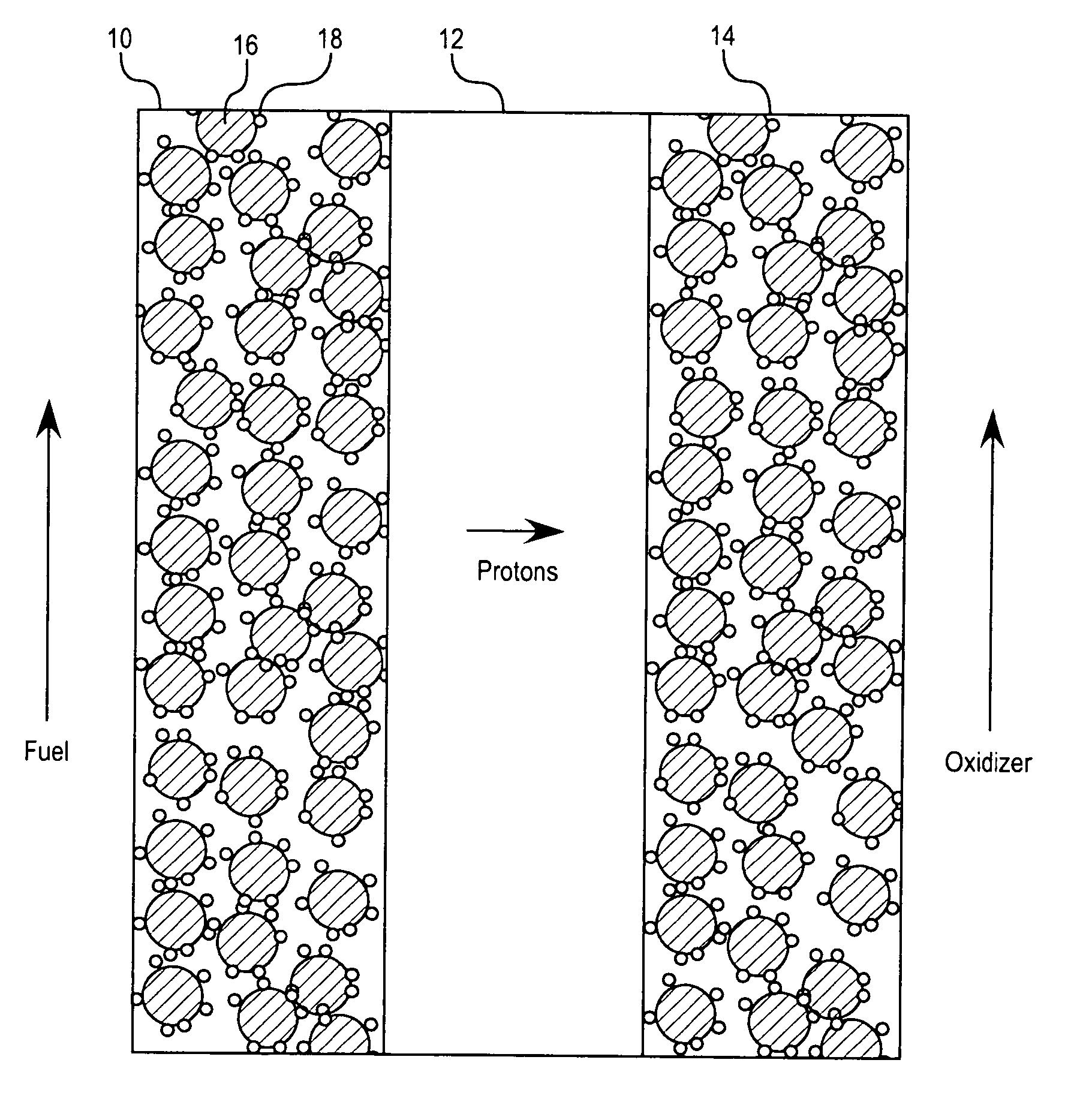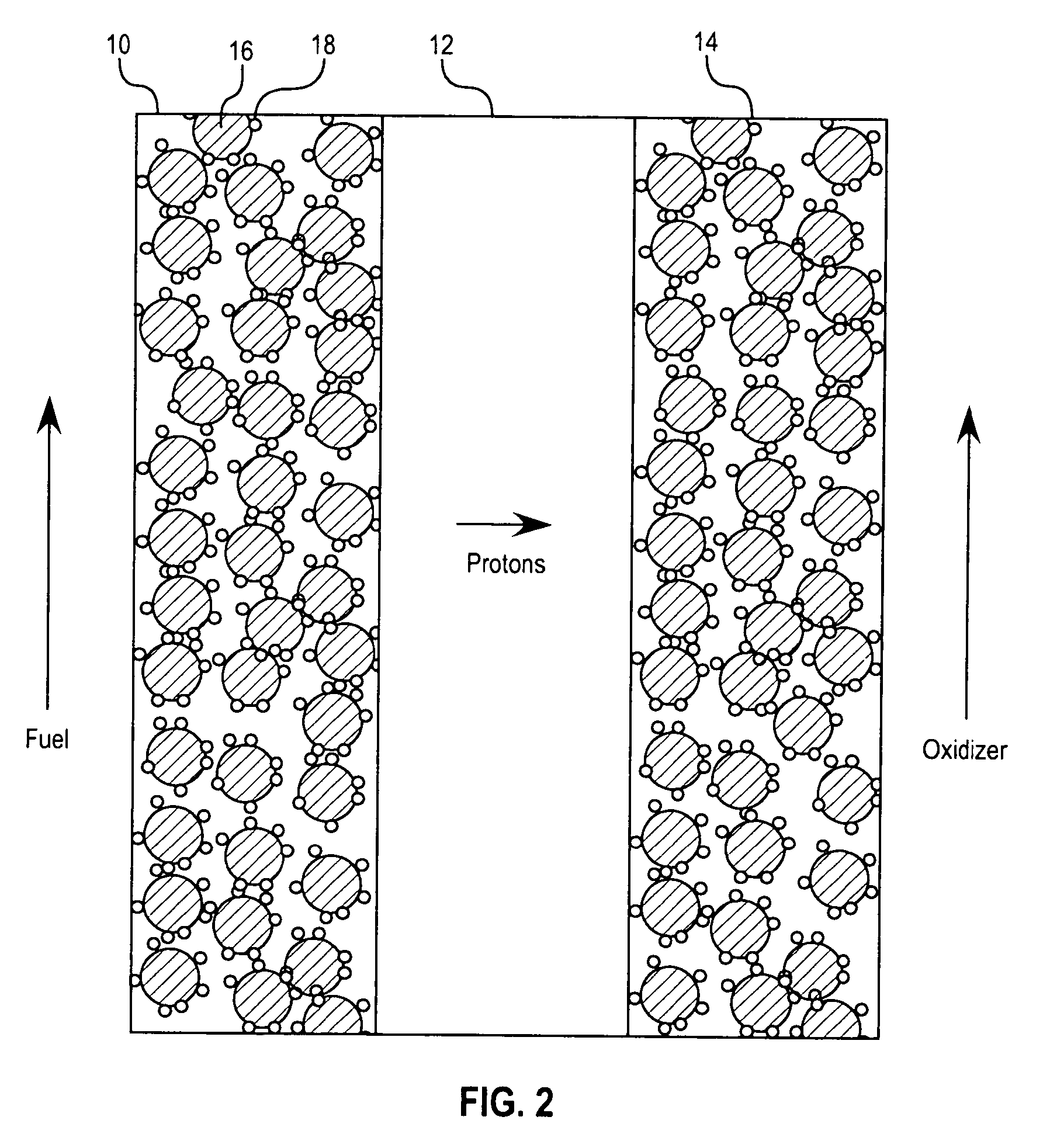Substituted nitrogen heterocycles as proton carriers for water-free proton exchange membranes for fuel cells
a fuel cell and proton exchange membrane technology, applied in the field of fuel cells, can solve the problems of fuel cells, limited current obtainable from the fuel cell, and limited speed of electrochemical reactions to produce energy
- Summary
- Abstract
- Description
- Claims
- Application Information
AI Technical Summary
Benefits of technology
Problems solved by technology
Method used
Image
Examples
Embodiment Construction
[0023] Before describing the present invention in detail, it is to be understood that this invention is not limited to specific solvents, materials, or device structures, as such may vary. It is also to be understood that the terminology used herein is for the purpose of describing particular embodiments only, and is not intended to be limiting.
[0024] As used in this specification and the appended claims, the singular forms “a,”“an,” and “the” include both singular and plural referents unless the context clearly dictates otherwise. Thus, for example, reference to “a nitrogen atom” includes a plurality of nitrogen atoms as well as a single nitrogen atom, reference to “a temperature” includes a plurality of temperatures as well as single temperature, and the like.
[0025] The term “Nafion-type polymer” refers to a polymer material having the formula
for integer x, y, and z.
[0026] The term “nitrogen heterocycle” refers to an organic compound which has at least one cycle and has at l...
PUM
| Property | Measurement | Unit |
|---|---|---|
| conductivity | aaaaa | aaaaa |
| temperatures | aaaaa | aaaaa |
| temperatures | aaaaa | aaaaa |
Abstract
Description
Claims
Application Information
 Login to View More
Login to View More - R&D
- Intellectual Property
- Life Sciences
- Materials
- Tech Scout
- Unparalleled Data Quality
- Higher Quality Content
- 60% Fewer Hallucinations
Browse by: Latest US Patents, China's latest patents, Technical Efficacy Thesaurus, Application Domain, Technology Topic, Popular Technical Reports.
© 2025 PatSnap. All rights reserved.Legal|Privacy policy|Modern Slavery Act Transparency Statement|Sitemap|About US| Contact US: help@patsnap.com



